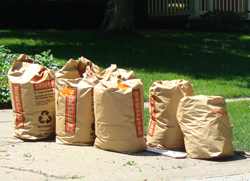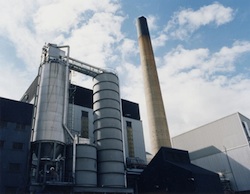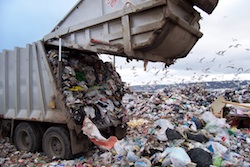 The Maryland Grain Producers Utilization Board (MGPUB) have awarded a grant to the Clean Fuels Foundation to support a statewide program to increase the sale of high level ethanol blends. MGPUB will be supporting the National FlexFuel Vehicle Awareness Campaign in a statewide program to increase awareness among owners of flexible fuel vehicles that are capable of utilizing ethanol blends up to 85%.
The Maryland Grain Producers Utilization Board (MGPUB) have awarded a grant to the Clean Fuels Foundation to support a statewide program to increase the sale of high level ethanol blends. MGPUB will be supporting the National FlexFuel Vehicle Awareness Campaign in a statewide program to increase awareness among owners of flexible fuel vehicles that are capable of utilizing ethanol blends up to 85%.
 MGPUB joins the U.S. Environmental Protection Agency (EPA), the U.S. Department of Agriculture (USDA), and more than 30 national companies and organizations that are part of the FFV Awareness Campaign working in several other states across the country. The overall campaign has been developed and is coordinated by the Clean Fuels Foundation, a Maryland based non-profit organization. With 16 E85 stations in the state and another half dozen scheduled to open in 2011, Maryland is a prime location to increase the use of ethanol and continue to expand infrastructure.
MGPUB joins the U.S. Environmental Protection Agency (EPA), the U.S. Department of Agriculture (USDA), and more than 30 national companies and organizations that are part of the FFV Awareness Campaign working in several other states across the country. The overall campaign has been developed and is coordinated by the Clean Fuels Foundation, a Maryland based non-profit organization. With 16 E85 stations in the state and another half dozen scheduled to open in 2011, Maryland is a prime location to increase the use of ethanol and continue to expand infrastructure.
According to Marion Wilson, the President of the MGPUB, the FFV Awareness Campaign is a perfect compliment to the recent investment they have made in refueling infrastructure. “This program is the next step in the evolution of the ethanol program. We are getting more refueling locations all the time and the cars are becoming increasingly available. We will make sure current FFV owners are aware their vehicles have this capability and then inform them that these fuels are available and where they can get them,” said Mr. Wilson. “We are sure that when drivers know this we will see an increase in the use of ethanol which provides a range of environmental, energy, and economic benefits,” he said.
“Maryland is a prime candidate to use our small grains like barley for the production of advanced biofuels like ethanol,” said Lynne Hoot, Executive Director of the MGPUB. “By increasing the use of ethanol right here in the state we would offer a great advantage to anyone developing a project in Maryland,” she said.






 Last month President Obama signed into law legislation that included the extension of the Volumetric Ethanol Excise Tax Credit (VEETC) and the alternative fuels infrastructure tax credit. These two credits will continue to be key in the expansion of ethanol-blended fuels and blender pumps and a free webinar Wednesday is designed tohelp retailers learn more about how ethanol can increase profit opportunities while giving consumers more options.
Last month President Obama signed into law legislation that included the extension of the Volumetric Ethanol Excise Tax Credit (VEETC) and the alternative fuels infrastructure tax credit. These two credits will continue to be key in the expansion of ethanol-blended fuels and blender pumps and a free webinar Wednesday is designed tohelp retailers learn more about how ethanol can increase profit opportunities while giving consumers more options. 

 Ethanol industry campaigns targeting the general public and Congress have won top awards from Region II of the
Ethanol industry campaigns targeting the general public and Congress have won top awards from Region II of the 

